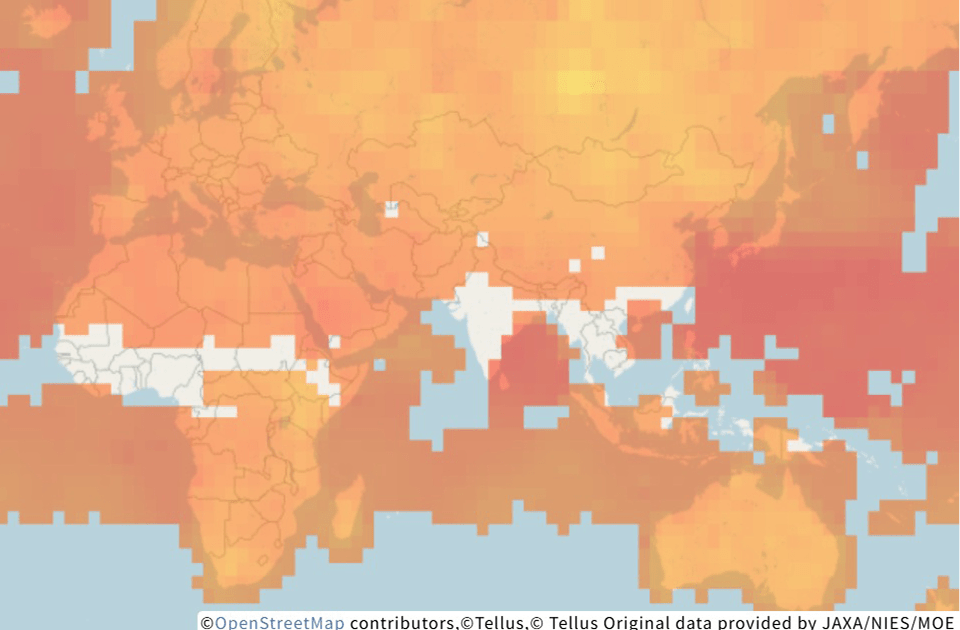
GOSAT/L3/SWIR global CO2 distribution(G1-06)
- Environmental
L3 global distribution data of CO2 concentration, estimated from L2 CO2 column amount data retrieved from the data observed by TANSO-FTS onboard GOSAT, which was developed as a joint project by the Ministry of the Environment (MOE), the National Institute for Environmental Studies (NIES), and the Japan Aerospace Exploration Agency (JAXA).
-
Check the data on browser
Need to login -
Operate via API
| Satellite | GOSAT |
|---|---|
| Sensor | TANSO-FTS |
| Provider | JAXA/NIES/MOE |
| Satellite operational period | 2009- |
| Sensor overview *1 | ■Instantaneous field of view (IFOV): approximately 10.5 km (in the case of nadir observation). ■Observation point interval: approximately 150 to 250 km (in the case of 3-points or 5-points observation, excluding specific point observation and sunglint observation). |
| Wavelength of sensor *2 | Band 1: 0.758 - 0.775 µm Band 2: 1.56 - 1.72 µm Band 3: 1.92 - 2.08 µm Band 4: 5.56 - 14.3 µm |
| Reference | https://data2.gosat.nies.go.jp/ https://www.gosat.nies.go.jp/en/ |
| Public availability status on Tellus (Period) | June 2009 - Updating |
|---|---|
| Public availability status on Tellus (Region) | Japan Asia excluding Japan Oceania Europe North America South America Africa |
| Need to purchase | Can be used without purchase |
| Environment in which data can be accessed *3 | This can be used outside the Tellus environment |
| Data formatting | HDF5 COG |
| COG data availability | Yes |
| Notes | The L3 global CO2 distribution (SWIR) is a product that stores global distribution of CO2 column-averaged concentration (2.5- by 2.5-degree grid) estimated by spatial inter/extra-polation based on the Kriging method to the L2 CO2 column amount (SWIR). On Tellus, data in 'HDF5' format, which is published by the GOSAT Data Archive Service, is converted into 'Cloud Optimized GeoTIFF' format. |
| Examples/reference | |
| Terms of use | https://www.tellusxdp.com/traveler/dataset/e1821089-de4d-4c34-9ef5-87857198748e/ |
Need to login
View more information
Data set details - Tellus TravelerNotes when using
- - You can use your derivative works generated in Tellus as you need. Refer here for more information.
- - Some data prohibits copying the original data to use outside of Tellus including just a part of, or formatted data that can be restored back to the original.
- - When using data in your own environment outside of Tellus, please notice that some of the data prohibit the usage or downloading. Please make sure to read the data details page.
- - You need an agreement in advance for commercial use. Please inquire Tellus office.
Reference for terms
- *1 Sensor overview
- The basics of satellite data — What it tells us, types, observation interval, resolution and use cases
- *2 Wavelength of sensor
- What is wavelength? Why satellites have capabilities to detect objects invisible to the human eye - Sorabatake
- *3 Environment in which data can be accessed
- Available only in Tellus: You can use data only in Tellus for either development or analysis environment.
Available from outside Tellus: You can use data in your own environment through downloading and/or API.